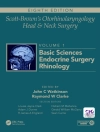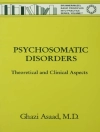The anatomy of the temporal bone is one of the most complicated areas in the human body. The vital structures, the three-dimensional relationships involved, and the fact that these structures are hidden within bony canals make the anatomy difficult to grasp. Described as a dream come true by the authors, Professor Sanna and his colleagues have devoted a major effort to creating this book to serve as a guide for young trainees wanting to learn more about temporal bone dissection. It provides comprehensive, high-quality, full-color pictures of the detailed steps of all the major surgical approaches that can be performed in the temporal bone, supplemented by images of cadaveric dissections as an aid to understanding the intracranial anatomy when indicated by the approach. Dr. Sanna is part of The Grupppo Otologico, a world-renowned specialist center for the diagnosis and medical and surgical treatment of diseases of the ear, skull base, facial nerve, head and neck, and paranasal sinuses. More information is available on the group’s website, www.gruppootologico.it/eng.
Inhaltsverzeichnis
1 Temporal Bone Dissection Laboratory
Surgical Instruments
General Guidelines for Drilling
Suction Irrigation
Preparation of the Specimen
Temporal Bone Holder
2 Anatomy of the Temporal Bone
Squamous Bone
Tympanic Bone
Mastoid Process
Petrous Bone
The Middle Ear
Internal Auditory Canal
The Intratemporal Facial Nerve
3 Transmastoid Approaches
Closed Tympanoplasty
Open Tympanoplasty
Modified Bondy Technique
Radical Mastoidectomy
Subtotal Petrosectomy
En-Bloc Excision of the External Auditory Canal
Endolymphatic Sac Decompression
Facial Nerve Decompression
Cochlear Implantation
4 Translabyrinthine Approaches
Basic Translabyrinthine Approach
Management of High Jugular Bulb
The Enlarged Translabyrinthine Approach with Transapical Extension Types (I & II)
Translabyrinthine Facial Nerve Decompression
5 Middle Cranial Fossa Approaches
Basic Middle Cranial Fossa Approach
Middle Cranial Fossa Approach for Tumors of the Labyrinthine Segment of the Facial Nerve
Combined Middle Cranial Fossa Transpetrous Approach
Combined Transmastoid Middle Cranial Fossa Approach
6 Retrosigmoid–Retrolabyrinthine Approach
7 Transotic Approach
8 Modified Transcochlear Approach (Type A)
9 Infratemporal Fossa Approaches
Infratemporal Fossa Approach Type A
Infratemporal Fossa Approach Type B
Über den Autor
Mario Sanna












